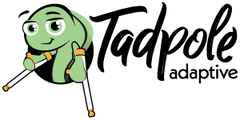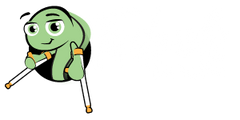24 Hour Positioning

24 Hour Positioning
What is 24 hour positioning? It is a fundamental belief that positioning needs must be addressed for the entire day, all 24 hours of it. Positioning concerns have traditionally revolved around the work day or school day and basic activities of daily living (i.e. toileting, bathing, feeding) without much thought going to night-time and alternative positioning options. The concept of looking at the entire day has been common in Europe for several years and is now reaching popularity in the United States. The importance of 24 hour positioning lies in the simple truth that muscle imbalance due to a neurological condition, if left untreated can result in physically deforming postures. These same muscle imbalances are present 24 hours a day. Abnormal muscle tone does not turn off at night-time and then on again in the morning. Tone management for 24 hours a day is essential to assist with preventing and managing postural deformities.
During 24 positioning, all positions and their potential effect on postures need to be examined. For example, if a child is left in a seated position for 8-10 hours a day with the only change in position occurring during toileting or feeding, then placed in a bed on their side or back with legs curved up, then the opposite muscles are never being activated so that a better muscle balance between the muscle groups can be achieved. In other words, if one muscle group, let’s say the flexors are constantly firing for an extended period of time, then for an equal or very least an extended period of time, the extensors need to work and allow the flexors to lengthen. By creating an opportunity for muscles to lengthen and shorten equally, it promotes better tone management potentially leading to fewer or less severe postural deformities.
The process of 24 hour positioning is further enhanced through the use of adaptive equipment. The use of seating systems, floor positioning, standers, gait trainers, rolls, wedges, versa forms, and specialty beds are excellent tools to utilize to promote alternative positions and work multiple muscle groups. Seating systems provide a great opportunity for trunk support with corrections for trunk leaning or pliable curvatures. They also present an opportunity for equal weight bearing through the pelvis and legs. Standers and gait trainers present possibilities for pressure relief, weight bearing through the legs to increase tone management, aerobic exercise, and muscle group lengthening in the trunk, hip flexors, gastrocnemii (calf muscles) and hamstrings. Floor positioning combined with the use of rolls and wedges create even more chances for positioning options including stretching, prone positioning on wedges (lying on stomach) and straddling the roll like a horse to stretch the adductors while simultaneously working on trunk balance. Additional benefits include opportunities to work on head control and pressure relief. Specialty beds are perhaps one of the most overlooked items. So much lengthening can occur with the use of positioning aids like the Versa Form or the Leckey Sleep Safe System. Specialty beds, like the Beds by George, offer a safe sleeping environment so parents and caregivers can relax at night.
It sounds easy in theory but it actually takes practice and insight from physicians and therapists. We encourage caregivers to maintain an open dialog with the physicians and therapists so that everyone involved in the child’s care are on the same page and aware of successes and potential areas of concern. Please discuss 24 hour positioning needs with this team. If at any time, it becomes too confusing or difficult to navigate through the world of adaptive equipment, please do not hesitate to contact us here at Tadpole Adaptive. We are always willing to provide unbiased and informed guidance.








